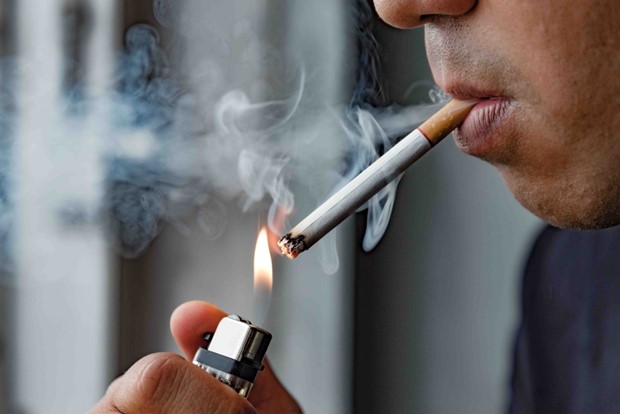A nurse is collecting data from a client who is 12 hr postpartum. Which of the following findings should the nurse expect?
Fundus soft, 2 fingerbreadths below the umbilicus.
Fundus firm, 2 fingerbreadths above the umbilicus.
Fundus soft, to the right of the umbilicus.
Fundus firm, at the level of the umbilicus.
The Correct Answer is D
Choice A reason:
A soft fundus indicates uterine atony, which is a lack of muscle tone that can lead to postpartum hemorrhage. A soft fundus is an abnormal finding and should be reported to the provider. The fundus should be firm and contracted to prevent bleeding.
Choice B reason:
A fundus that is 2 fingerbreadths above the umbilicus is too high for a client who is 12 hours postpartum. The fundus should descend about 1 centimeter per hour after delivery and should be at the level of the umbilicus at 12 hours postpartum. A high fundus could indicate retained placental fragments or a full bladder, both of which can interfere with uterine contraction and cause bleeding.
Choice C reason:
A fundus that is deviated to the right of the umbilicus is also an abnormal finding for a client who is 12 hours postpartum. A deviated fundus could indicate a full bladder, which can displace the uterus and prevent it from contracting properly. The fundus should be at the midline of the abdomen.
Choice D reason:
A fundus that is firm and at the level of the umbilicus is a normal finding for a client who is 12 hours postpartum. This indicates that the uterus is involuting (returning to its pre-pregnancy size and shape) and that there is no excessive bleeding. The nurse should expect this finding and document it accordingly.
Nursing Test Bank
Naxlex Comprehensive Predictor Exams
Related Questions
Correct Answer is ["A","B","D"]
Explanation
Choice A:
Document fundal height. This is a correct action because the nurse should monitor the involution of the uterus by measuring the fundal height and comparing it to the expected level. The fundus should descend about one fingerbreadth (1 cm) per day after delivery and be at the level of the umbilicus immediately after birth.
Choice B:
Observe the lochia during palpation of the fundus. This is a correct action because the nurse should assess the amount, color, and consistency of the lochia (vaginal discharge) during the fundal massage. The lochia should change from rubra (red) to serosa (pink) to alba (white) over time and not increase in amount or revert to a previous stage.
Choice C:
Massage a firm fundus. This is an incorrect action because a firm fundus indicates adequate uterine contraction and involution. Massaging a firm fundus can cause discomfort and bleeding for the client. The nurse should only massage a boggy (soft) fundus to stimulate contraction and prevent hemorrhage.
Choice D:
Determine whether the fundus is midline. This is a correct action because the nurse should check if the fundus is deviated to either side, which may indicate a full bladder. A full bladder can interfere with uterine contraction and cause bleeding or infection. The nurse should assist the client to void if the fundus is not midline.
Choice E:
Administer terbutaline if the fundus is boggy. This is an incorrect action because terbutaline is a tocolytic drug that relaxes the uterine muscle and inhibits contractions. It is used to stop preterm labor, not to treat postpartum hemorrhage. The nurse should administer oxytocin or other uterotonic drugs if the fundus is boggy and does not respond to massage.
Correct Answer is A
Explanation
Choice A reason:

Smoking is the most significant risk factor for clubfoot, according to several studies that have found a strong association between maternal smoking during pregnancy and the occurrence of clubfoot in the offspring. Smoking may affect the development of the muscles and tendons in the fetus, leading to abnormal positioning of the foot.
Choice B reason:
Trauma during pregnancy is not a significant risk factor for clubfoot, as there is no evidence that physical injury to the mother or the fetus can cause this deformity. Clubfoot is a congenital condition that is present at birth and usually detected by prenatal ultrasound.
Choice C reason:
Hypertension is not a significant risk factor for clubfoot, as there is no evidence that high blood pressure in the mother or the fetus can cause this deformity. Clubfoot is a congenital condition that is present at birth and usually detected by prenatal ultrasound.
Choice D reason:
Decreased circulation is not a significant risk factor for clubfoot, as there is no evidence that poor blood flow to the mother or the fetus can cause this deformity. Clubfoot is a congenital condition that is present at birth and usually detected by prenatal ultrasound.
Whether you are a student looking to ace your exams or a practicing nurse seeking to enhance your expertise , our nursing education contents will empower you with the confidence and competence to make a difference in the lives of patients and become a respected leader in the healthcare field.
Visit Naxlex, invest in your future and unlock endless possibilities with our unparalleled nursing education contents today
Report Wrong Answer on the Current Question
Do you disagree with the answer? If yes, what is your expected answer? Explain.
Kindly be descriptive with the issue you are facing.
